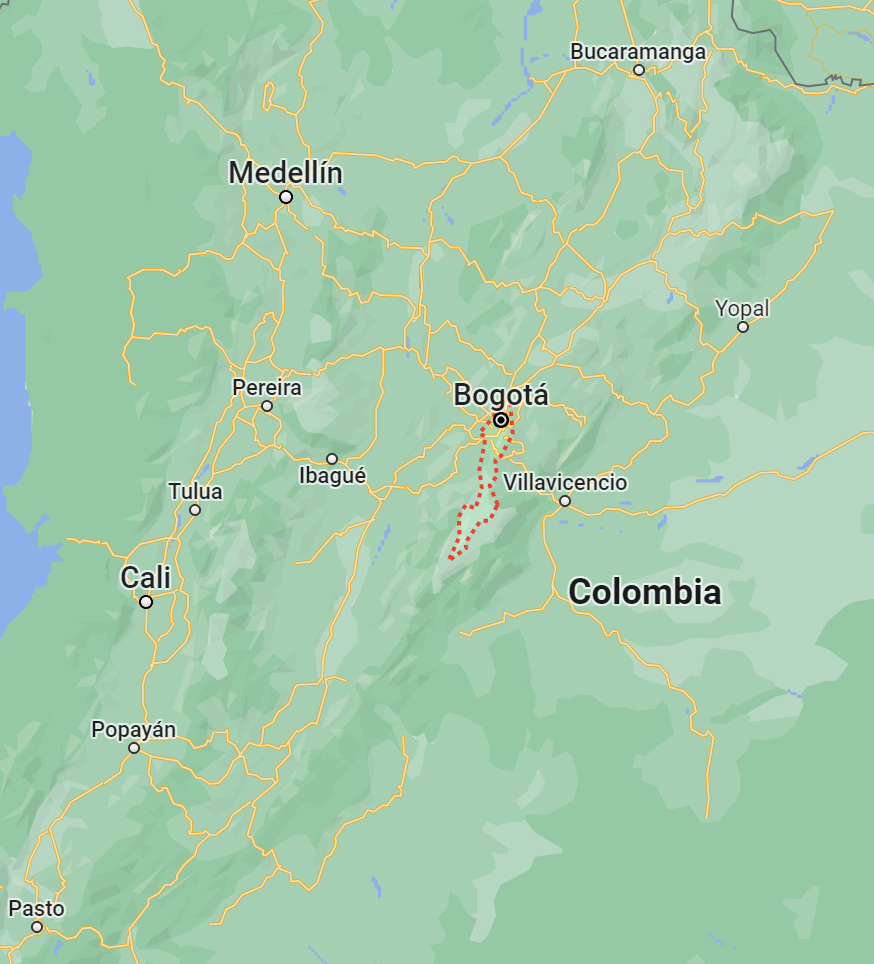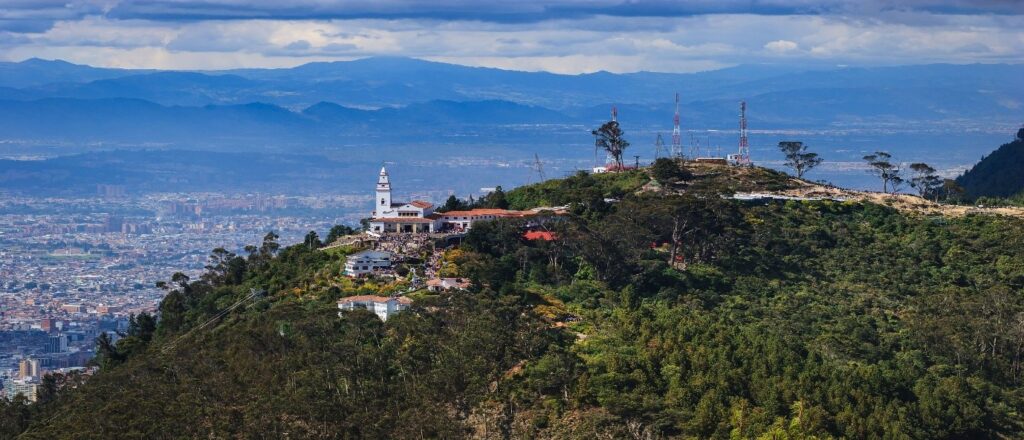Bogotá
Department
Cundinamarca, Columbia

Flag of the city

Seal of the city

Slogan of the city
The slogan for Bogotá, Colombia is “Bogotá, 2600 meters closer to the stars” (in Spanish: “Bogotá, 2600 metros más cerca de las estrellas”). This refers to the city’s altitude, which is approximately 2,600 meters (or about 8,530 feet) above sea level.
History

Bogotá, the capital and largest city of Colombia, Bogotá was founded on August 6, 1538, by Spanish conquistador Gonzalo Jiménez de Quesada. City has a history that stretches back thousands of years. Before the Spanish conquest, the region was home to the Muisca people, an indigenous group with a sophisticated system of governance and a confederation of villages. The Muisca civilization is renowned for the legend of “El Dorado”, which tells of a lavish ceremony where a chieftain would be covered in gold dust and dive into Lake Guatavita, located near present-day Bogotá. In 1538, Spanish conquistador Gonzalo Jiménez de Quesada founded the city as “Santa Fe de Bogotá”. Over the centuries, it became an epicenter of Spanish colonial administration and the seat of the Viceroyalty of New Granada. In the early 19th century, amid growing discontent with Spanish rule, Bogotá became a focal point for revolutionary activities. It was in this city, in 1810, that the first cry for independence was proclaimed, leading to a series of events that would culminate in Colombia’s full independence in 1819. In modern times, Bogotá has faced challenges, including drug cartel violence and political instability, but it has also emerged as a hub of culture, education, and commerce in South America. Today, the city stands as a testament to Colombia’s resilience and its vibrant blend of indigenous, colonial, and contemporary influences.
Geography of the city
City Located in the central part of Colombia, Bogotá is nestled within the Andean region, particularly on a high plateau known as the Bogotá savanna, which forms part of the larger Altiplano Cundiboyacense. This elevation, approximately 2,640 meters (8,660 feet) above sea level, bestows upon the city a temperate and often cool climate. The Eastern Andes mountain range bounds the city on its eastern edge, providing a majestic backdrop and influencing urban expansion patterns. Furthermore, the Bogotá River courses through this savanna, punctuating the plateau’s landscape, while several wetlands spread across the city offer ecological diversity.
From a geospatial perspective, Bogotá is situated at approximately 4.6° N latitude, 74.1° W longitude and altitude is approximately 2,600 meters (or about 8,530 feet) above sea level.
This specific positioning has made the city a central hub for the nation both politically and economically. The geospatial layout of Bogotá, influenced by its mountainous constraints and river pathways, has directed urban development, transportation corridors, and environmental preservation zones. Advanced geospatial technologies are now being used in Bogotá for urban planning, traffic management, and environmental conservation to ensure sustainable growth. Its unique geospatial footprint, combined with its geographical characteristics, continues to shape the city’s identity, challenges, and opportunities in the broader Colombian and South American context.

Population
11,344,000 (2022)
11,508,000 (2023)
One photo representative of the city
Monserrate, the majestic mountain that overlooks Bogotá, is an enduring symbol of the city’s rich cultural, religious, and natural heritage. Rising dramatically from the cityscape, it holds deep religious significance as the location of the Santuario del Señor Caído de Monserrate, a sanctuary that draws pilgrims from far and wide. Beyond its spiritual importance, Monserrate offers stunning vistas of Bogotá, providing a panoramic view of the sprawling urban landscape nestled within the Andean mountains. Covered in lush vegetation, it also serves as a serene natural oasis within the bustling city, with hiking trails inviting outdoor enthusiasts. At the summit, visitors can immerse themselves in Colombian culture, savoring traditional cuisine, exploring local crafts, and experiencing live music performances. With historical roots dating back to the colonial era, Monserrate embodies the diverse facets of Bogotá’s identity, making it an integral and cherished part of the city’s character.

Etymology
The name of Bogotá corresponds to the Spanish pronunciation of the Chibcha Bacatá (or Muyquytá) which was the name of a neighboring settlement located between the modern towns of Funza and Cota. There are different opinions about the meaning of the word Muyquytá, the most accepted being that it means “walling of the farmland” in the Chibcha language.[24][25] Another popular translation argues that it means “The Lady of the Andes”.[17] Others suggest that Bacatá was the name of the Muisca cacique who governed the land before the Spaniards arrived.[26] Jiménez de Quesada gave the settlement the name of “Our Lady of Hope” but the Spanish crown gave it the name of Santafé (Holy Faith) in 1540 when it was appointed as a city.[24] The Muisca, the indigenous inhabitants of the region, called the place on which the city was founded “Thybzaca” or “Old Town”.
What the city is known or famous for
Bogota was founded in 1538 and still retains its historical charm in areas such as La Candelaria. Aside from being historically significant, Bogota is also known for its arts, gastronomy and culture. Explore this vibrant capital and take day trips from Bogota while visiting Colombia. Bogotá has many cultural venues including 58 museums, 62 art galleries, 33 library networks, 45 stage theatres, 75 sports and attraction parks, and over 150 national monuments. Many of these are renowned globally such as: The Luis Ángel Arango Library, the most important in the region. which receives well over 6 million visitors a year. The Colombian National Museum, one of the oldest in the Americas, dating back to 1823. The Ibero-American Theatre Festival, largest of its kind in the world, receives 2 million attendees enjoying over 450 performances across theatres and off the street. The Bogotá Philharmonic is the most important symphony orchestra in Colombia, with over 100 musicians and 140 performances a year.



